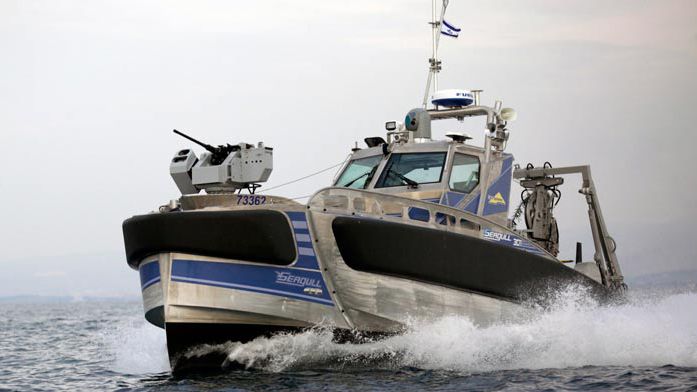First Unmanned Anti-Submarine Vessel Debuts

On Monday, Elbit Systems of Haifa, Israel, showed media a prototype of what it described as the world's first ever unmanned, autonomous anti-submarine warfare (ASW) platform, called Seagull.
Ofer Ben-Dov, vice president of the firm's Naval Systems Business Line, said that “we are witnessing the proliferation of submarines, both conventional and nuclear, and sea mines. The cost and risk of dealing with these threats is high,” he said.
"Until now dealing with submarines was carried out by heavy craft such as missile boats and fighter aircraft and helicopters at operative costs of hundreds of millions of dollars," Elbit systems executive vice president Elad Aharonson told media. "The USV lowers costs for these missions by many tens of times. It can seek out enemy submarines, pursue them over large distances and turn them into prey."
The Seagull was developed independently by Elbit, with guidance from Israeli defense officials, in a self-funded effort. The 40-foot autonomous launch can be fitted with mission modules for ASW, mine countermeasures, and force protection / patrol, including a stabilized, remotely operated .50-caliber machine gun and wire-guided torpedoes for stand-off destruction of mines.
The Seagull can also deploy additional sensor packages into the water for ASW and mine-hunting purposes.
Elbit adds that the boat's safe sailing electronic navigation suite allows it to operate autonomously, transiting its assigned route while avoiding objects and vessels, in adherence to the navigational Rules of the Road.
A single shipboard mission control system can control two of the craft remotely, and they can operate without refueling for up to four days.
The firm has considerable previous experience in unmanned surface vessel systems, including the 30-foot Silver Marlin and the 10-foot Stingray USV platforms, plus a 30-year track record with unmanned aerial vehicles.
A long-running American effort to develop a 130-foot autonomous, oceangoing submarine tracking vessel is expected to begin testing of a prototype ship early this year.
